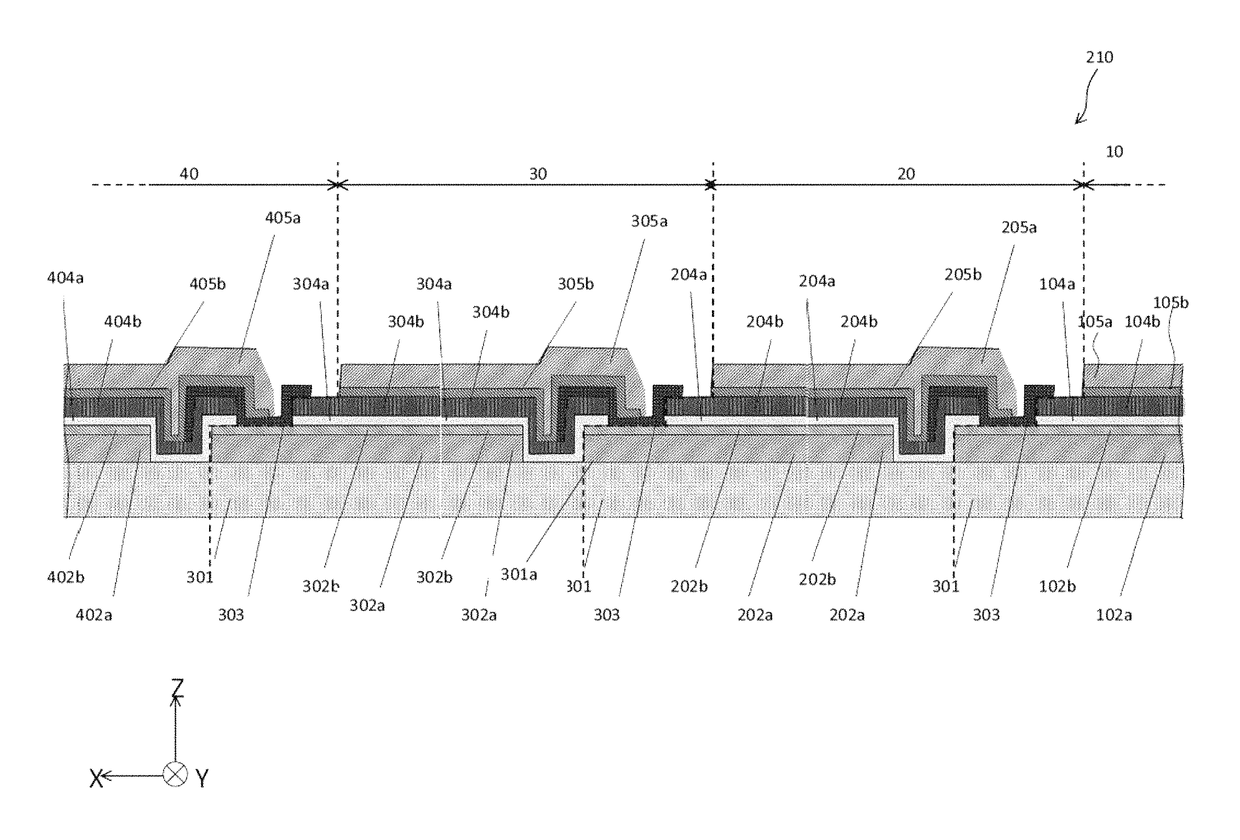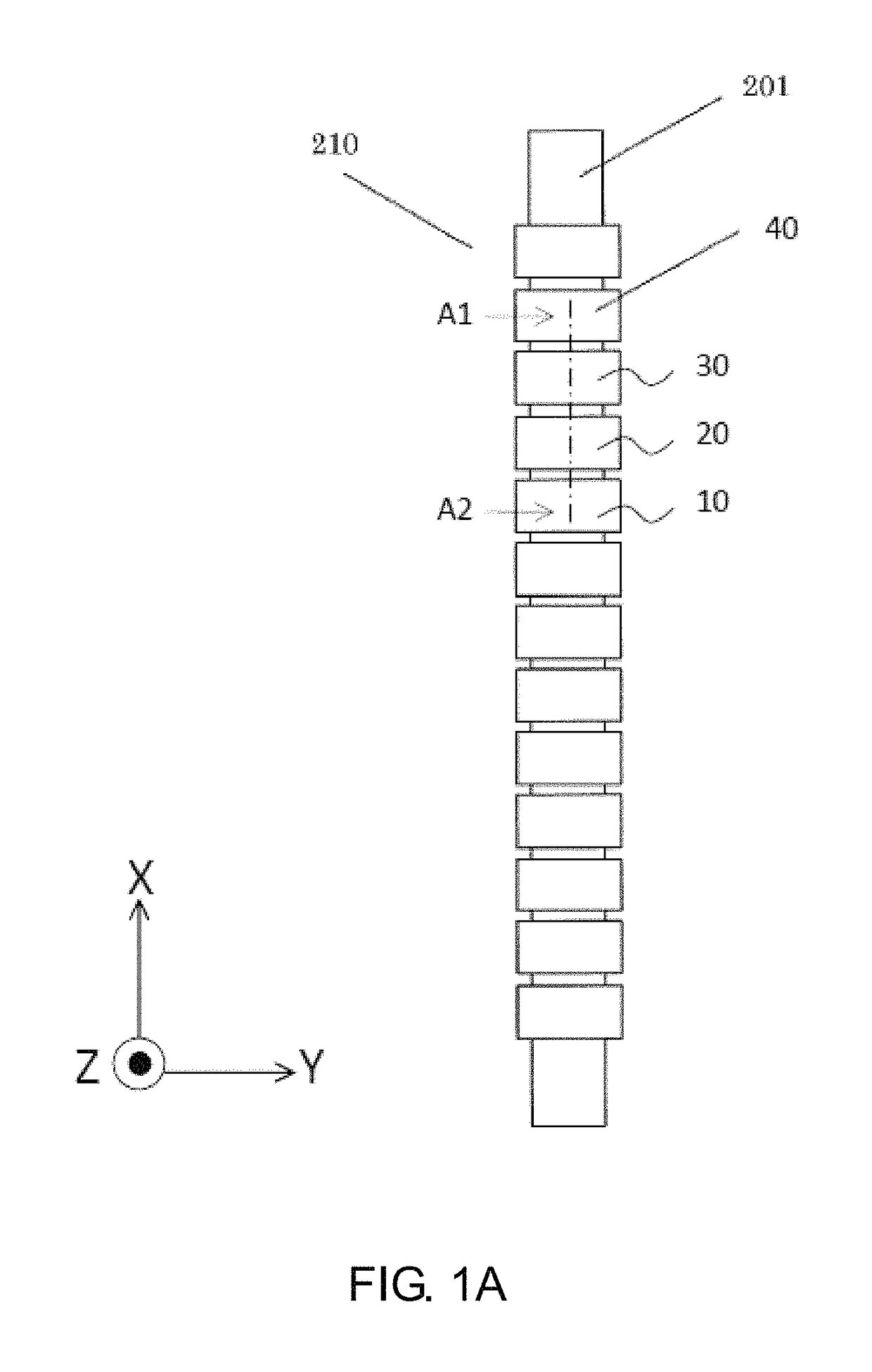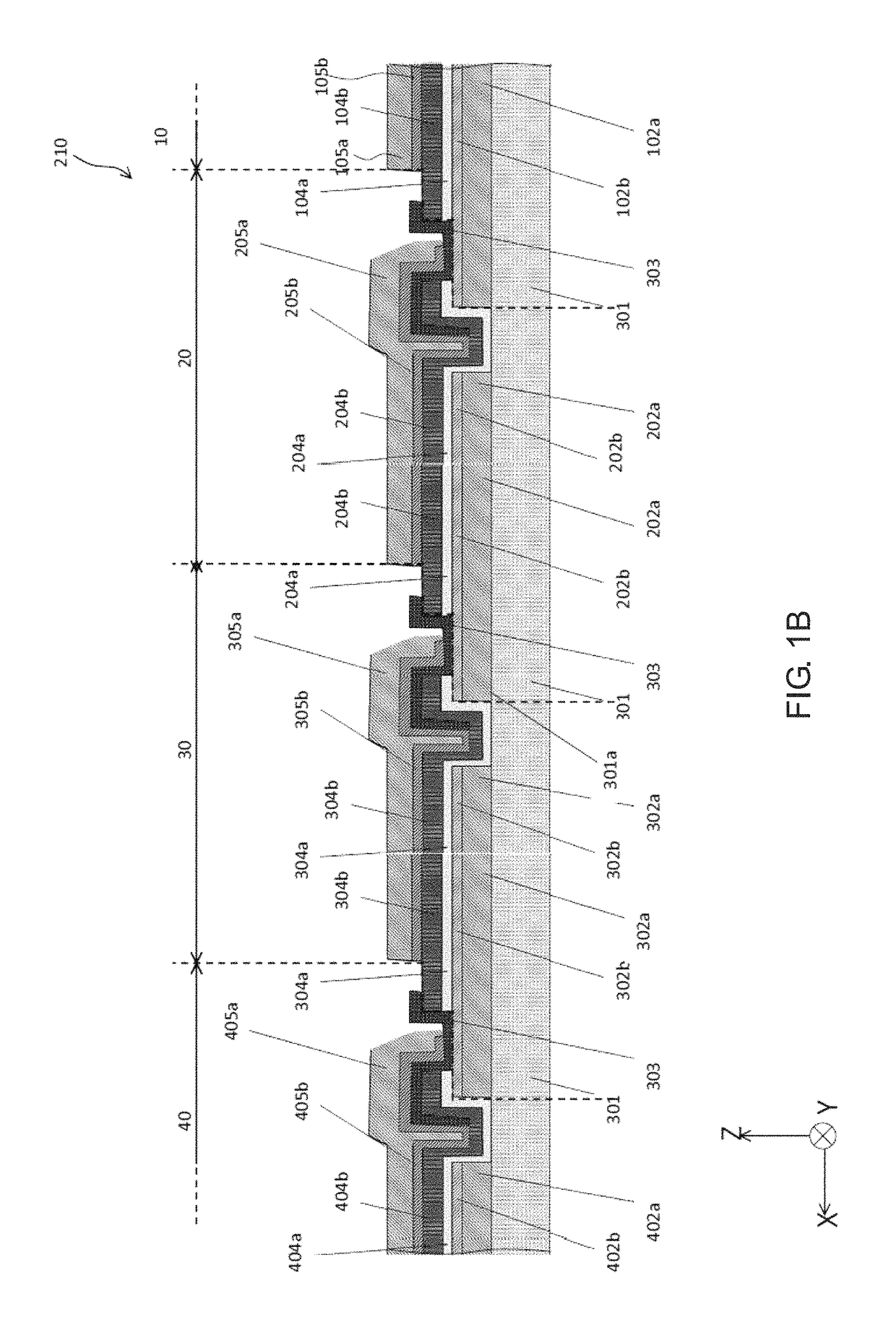Solid oxide fuel cell stack
a fuel cell and solid oxide technology, applied in the direction of cell components, electrochemical generators, electrolytes, etc., can solve the problems of insufficient electrical conductivity of ceramic interconnectors, disadvantageous incorporation of ceramic interconnectors into porous electrodes, and small thickness, so as to achieve excellent power generation performance, suppress the formation of counter cells, and effectively suppress the effect of power generation performan
- Summary
- Abstract
- Description
- Claims
- Application Information
AI Technical Summary
Benefits of technology
Problems solved by technology
Method used
Image
Examples
examples
[0157]The present invention is further illustrated by the following Examples and Comparative Examples that are not intended as a limitation of the scope of the present invention.
example a1
Preparation of Green Body A for Support
[0158]A Raw Material Powder of a High-Purity Forsterite (Mg2SiO4 containing 0.05% by mass of CaO) was regulated to a mean particle diameter of 0.7 μm. 100 parts by weight of this powder, 20 parts by weight of a solvent (water), 8 parts by weight of a binder (methylcellulose), 0.5 part by weight of a lubricant, and 15 parts by weight of a pore forming agent (acrylic resin particles having a mean particle diameter of 5 μm) were mixed in a rapid mixer, the mixture was kneaded in a kneader, the kneaded product was deaerated with a vacuum pug mill to prepare a green body for extrusion molding The mean particle diameter was measured according to JIS R1629 and expressed in terms of 50% diameter (the same shall apply hereinafter).
[0159]Preparation of Slurry for Fuel Electrode Layer
[0160]A NiO powder and a 10YSZ (10 mol % Y2O3-90 mol % ZrO2) power were mixed together by wet mixing at a weight ratio of 65:35 to obtain a dry powder. The dry powder thus ob...
example a2
[0182]A solid oxide fuel cell stack was obtained in the same manner as in Example A1, except that L′ / L was 50. The solid oxide fuel cell stack thus obtained was evaluated as follows. The results are shown in Table 1.
PUM
| Property | Measurement | Unit |
|---|---|---|
| thickness | aaaaa | aaaaa |
| thickness | aaaaa | aaaaa |
| thickness | aaaaa | aaaaa |
Abstract
Description
Claims
Application Information
 Login to View More
Login to View More - R&D
- Intellectual Property
- Life Sciences
- Materials
- Tech Scout
- Unparalleled Data Quality
- Higher Quality Content
- 60% Fewer Hallucinations
Browse by: Latest US Patents, China's latest patents, Technical Efficacy Thesaurus, Application Domain, Technology Topic, Popular Technical Reports.
© 2025 PatSnap. All rights reserved.Legal|Privacy policy|Modern Slavery Act Transparency Statement|Sitemap|About US| Contact US: help@patsnap.com



